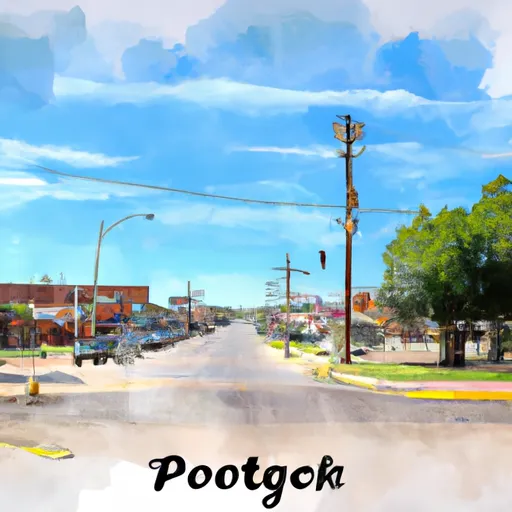-
 Snoflo Premium
Snoflo Premium
Get unlimited access to all our content
With no Ad interruptions! - Start Your Free Trial Login with existing account
Proctor
Eden Index
Climate
8.1
•
Recreation
2.1
•
Community
•
Safeguard
4.0/10

Proctor, Oklahoma is a small town located in Adair County. The climate in Proctor is classified as humid subtropical, with hot and humid summers and mild winters. Summers are typically characterized by temperatures ranging from 80°F to 95°F, while winters see temperatures averaging around 40°F. The area experiences rainfall throughout the year, with higher precipitation levels during the spring and fall seasons.
In terms of hydrology constituents, Proctor is surrounded by several water bodies. The town is situated near Lake Tenkiller, a popular destination for fishing, boating, and water sports. The lake is known for its clear waters and diverse fish population, attracting anglers from far and wide. Additionally, the Illinois River flows nearby, offering opportunities for canoeing, kayaking, and rafting.
Outdoor recreation opportunities in Proctor are abundant. Apart from the water activities at Lake Tenkiller and the Illinois River, the area boasts numerous hiking trails, camping sites, and wildlife watching opportunities. Nature enthusiasts can explore the nearby Cookson Hills Wildlife Management Area, which spans over 10,000 acres and offers hunting and hiking opportunities.
Overall, Proctor, Oklahoma provides a pleasant climate, ample water resources, and diverse outdoor recreation options for residents and visitors alike.
What is the Eden Index?
The Snoflo Eden Index serves as a comprehensive rating system for regions, evaluating their desirability through a holistic assessment of climate health, outdoor recreation opportunities, and natural disaster risk, acknowledging the profound impact of these factors on livability and well-being.
Climate Health Indicator (CHI): 8.1
Proctor receives approximately
1192mm of rain per year,
with humidity levels near 81%
and air temperatures averaging around
15°C.
Proctor has a plant hardyness factor of
7, meaning
plants and agriculture in this region tend to thrive during the non-winter months.
By considering the ideal temperature range, reliable water supplies, clean air, and stable seasonal rain or snowpacks, the Climate Health Indicator (CHI) underscores the significance of a healthy climate as the foundation for quality living.
A healthy climate is paramount for ensuring a high quality of life and livability in a region, fostering both physical well-being and environmental harmony. This can be characterized by ideal temperatures, reliable access to water supplies, clean air, and consistent seasonal rain or snowpacks.
Weather Forecast
Streamflow Conditions
Robert S. Kerr Reservoir
Area Rivers
Robert S. Kerr Reservoir
Snowpack Depths
Robert S. Kerr Reservoir
Reservoir Storage Capacity
Robert S. Kerr Reservoir
Groundwater Levels
Recreational Opportunity Index (ROI): 2.1
The Recreational Opportunity Index (ROI) recognizes the value of outdoor recreational options, such as parks, hiking trails, camping sites, and fishing spots, while acknowledging that climate plays a pivotal role in ensuring the comfort and consistency of these experiences.
Access to outdoor recreational opportunities, encompassing activities such as parks, hiking, camping, and fishing, is crucial for overall well-being, and the climate plays a pivotal role in enabling and enhancing these experiences, ensuring that individuals can engage in nature-based activities comfortably and consistently.
Camping Areas
| Campground | Campsites | Reservations | Toilets | Showers | Elevation |
|---|---|---|---|---|---|
| Quarry Island - Lake Wister State Park | None | 523 ft | |||
| Billy Creek | 12 | 836 ft | |||
| Below the Dam - Lake Wister State Park | None | 462 ft | |||
| Winding Stair | 23 | 1,961 ft | |||
| Applegate Cove - Kerr Reservoir | None | 481 ft | |||
| Wards Landing - Lake Wister State Park | None | 519 ft | |||
| Talimena State Park | None | 1,064 ft | |||
| Hochatown State Park | None | 640 ft | |||
| Victor Area - Lake Wister State Park | None | 506 ft | |||
| Beavers Bend State Park | None | 460 ft |
Nearby Fishing
Catastrophe Safeguard Index (CSI):
The Catastrophe Safeguard Index (CSI) recognizes that natural disaster risk, encompassing floods, fires, hurricanes, and tornadoes, can drastically affect safety and the overall appeal of an area.
The level of natural disaster risk in a region significantly affects safety and the overall livability, with climate change amplifying these risks by potentially increasing the frequency and intensity of events like floods, fires, hurricanes, and tornadoes, thereby posing substantial challenges to community resilience and well-being.
Community Resilience Indicator (CRI):
The Community Resilience Indicator (CRI) recognizes that education, healthcare, and socioeconomics are crucial to the well-being of a region. The CRI acknowledges the profound impact of these elements on residents' overall quality of life. By evaluating educational resources, healthcare accessibility, and economic inclusivity, the index captures the essential aspects that contribute to a thriving community, fostering resident satisfaction, equity, and social cohesion.

